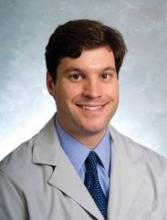While there was plenty of buzz about whole genome sequencing at this year’s American College of Medical Genetics meeting, the uptake is limited by several factors, including questions about how to best obtain informed consent for such extensive testing, what results should be reported, whether certain findings should always be reported, and insurance coverage. However, the next-generation sequencing technology used in whole genome sequencing is already opening the door to genetic panels that are being offered to patients.
Rather than testing a single gene for a mutation related to a health condition, next-generation sequencing allows for the simultaneous testing of many genes for genetic mutations. There is no real limit to how many genes are contained on a particular panel. Most relevant to primary care settings is the recent explosion in cancer-related panels. Primary care physicians are likely to be the ones who will be called upon to manage the implications of such testing.
BRCA1 and BRCA2 remain at the forefront of breast cancer susceptibility testing, as they account for about 5% of breast cancer cases and have established guidelines for testing and the management of mutation carriers.
However, other genes also are important in determining breast cancer risk (see related column, "Evaluating Risk for Breast Cancer," Oct. 1, 2010, p. 50). Although these mutations are less common, they are fairly well defined in the literature, they are associated with breast as well as other cancers, and they are moderately to highly penetrant. Finding mutations in these genes can often lead to changes in medical management. With next-generation sequencing panels these genes, along with other genes more recently found to be associated with breast cancer, can be evaluated on so-called BRCA Negative Panels. These next-generation sequencing panels provide information that is potentially more actionable in terms of management and more accurate in terms of defining an individual’s risk. But even so, their clinical utility lies on a spectrum.
For example, some panel genes have been found in familial breast cancer families (e.g., CHEK2, ATM, and PALB2); however, there are no standards of care or evidence-based guidelines regarding medical management for these patients. It’s unclear, for example, when breast MRIs in addition to mammograms are indicated and at what age screening should begin, if not at age 40 years. Insurance coverage for such screening also is uncertain.
Other panel genes (e.g., BRIP1 and RAD51C) are ones that we are still learning about in terms of their role in cancer risk and whether they have additional non–breast cancer associated risks. The degree to which they contribute to breast cancer risk also has yet to be determined.
What seems clear at this point is that primary care physicians and genetics professionals need to engage each other to identify candidates for "high-risk" breast cancer screening protocols that might involve annual mammography in addition to breast MRI, clinical exams every 6 months, and self breast exams monthly. The American Cancer Society recommends such a protocol when a woman’s risk of developing breast cancer is 20% or higher, according to family-based risk models. This risk is a rough doubling of the general population’s risk for breast cancer.
Should we be recommending a high-risk protocol to our patients who test positive for the seemingly less penetrant genes? If so, at what age do we begin? Will we be able to justify utilization of MRI screening to insurance companies when robust data for supporting the use, as in BRCA1 and 2, do not exist, but clinically it might make sense?
The pace of genetic technology will continue to outpace the generation of clinical utility data, underscoring the importance of sound clinical judgment by primary care physicians in partnership with genetics professionals in weighing the usefulness of genetic testing in patient management.
Dr. Hulick is a medical geneticist at NorthShore University HealthSystem, Evanston, Ill., and a clinical assistant professor at the University of Chicago, Pritzker School of Medicine. He reported having no conflicts of interest.


